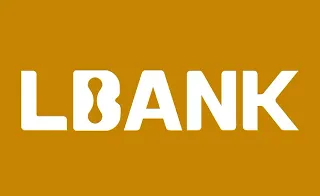Lower Lows (LL) and Lower Highs (LH) are basic concepts in technical analysis used to identify bearish market trends. These structures reflect the dominance of sellers in the market and the price's tendency to decline further.
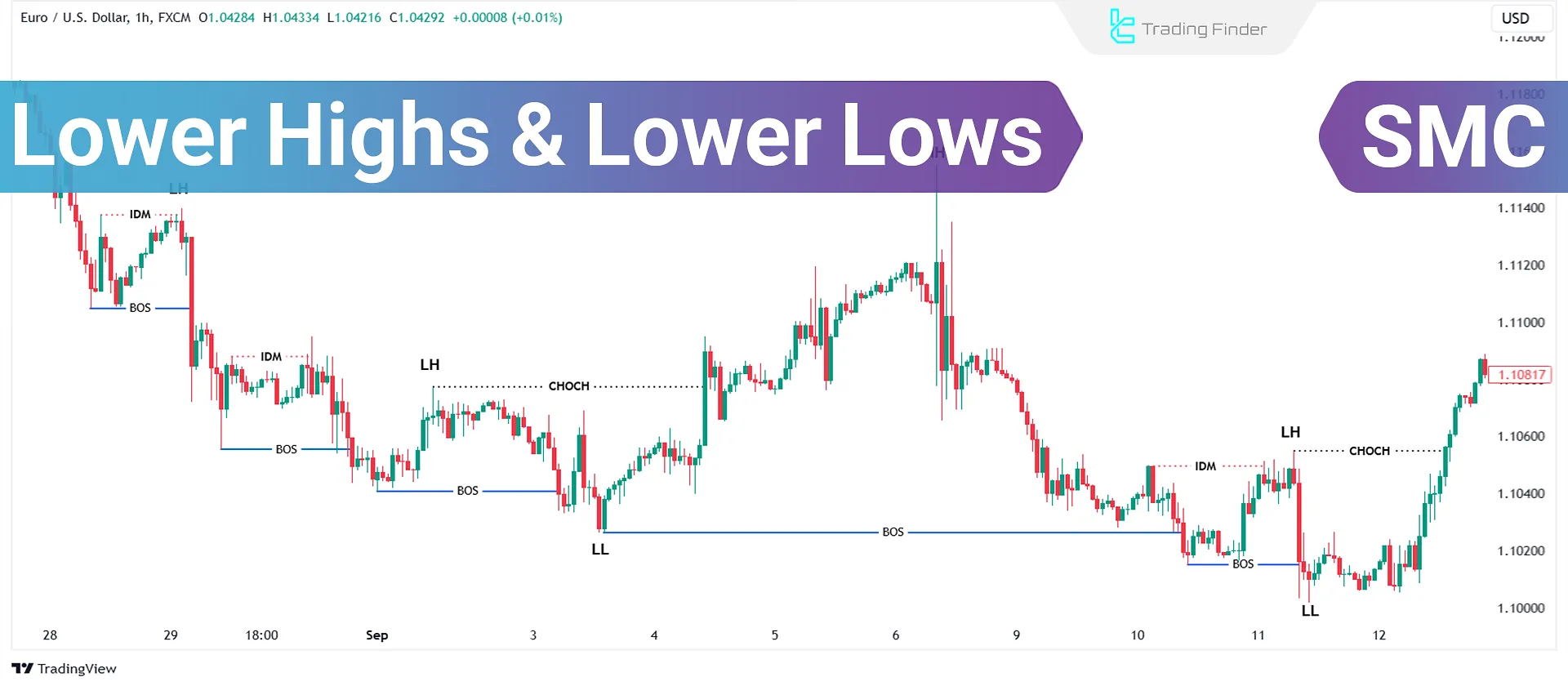
Mastering these concepts is essential for finding suitable entry points for sell trades and improving risk management.
Identifying these patterns requires a precise understanding of Smart Money concepts like Break of Structure (BOS), Change of Character (CHOCH), and Inducement.
What Are Lower Lows and Lower Highs?
In a bearish trend, two main structures are formed:
- Lower Low (LL): Occurs when a new low is lower than the previous low. This indicates the strength of sellers and the market's tendency to decline further.
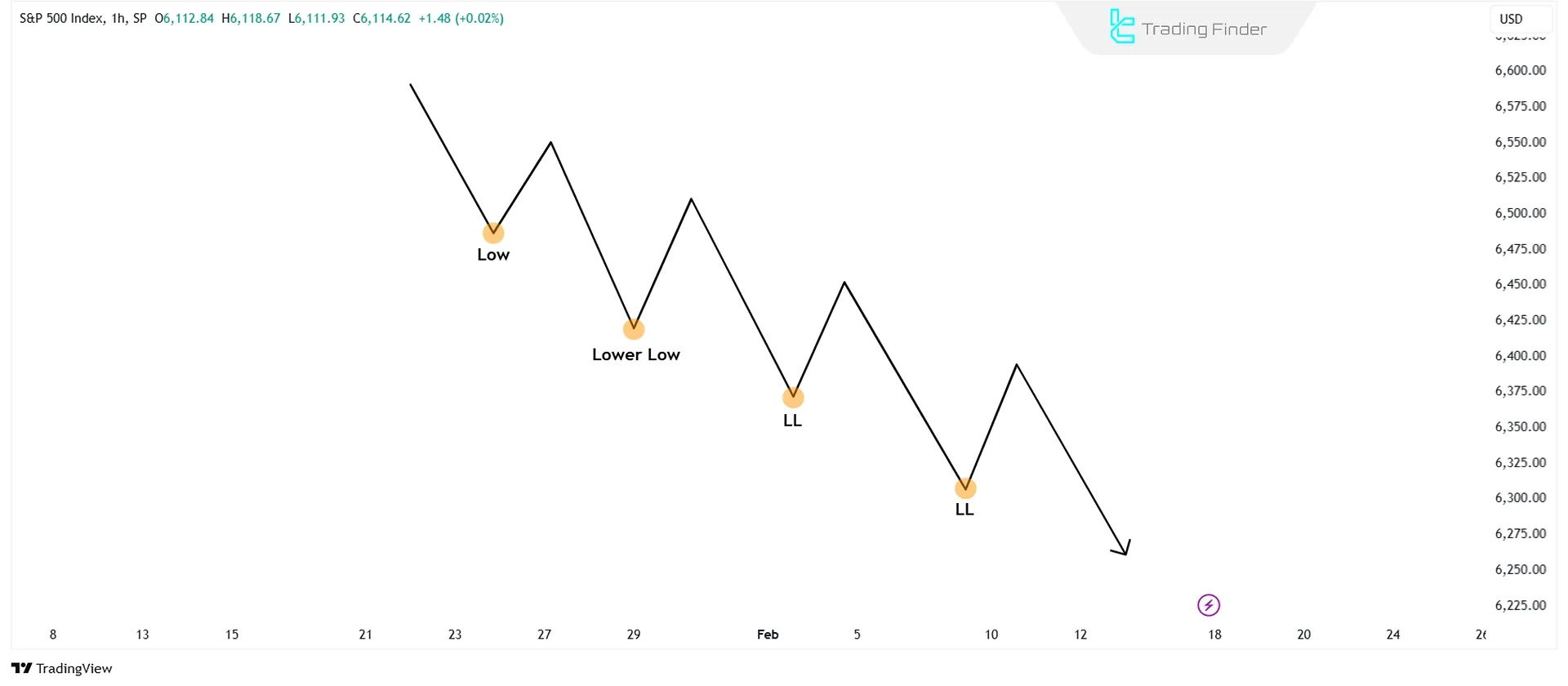
General formation of Lower Lows (LL) in a downtrend - Lower High (LH): Forms when a new high is lower than the previous high. This suggests that buyers failed to push the price above the prior high, confirming the validity of the bearish trend.
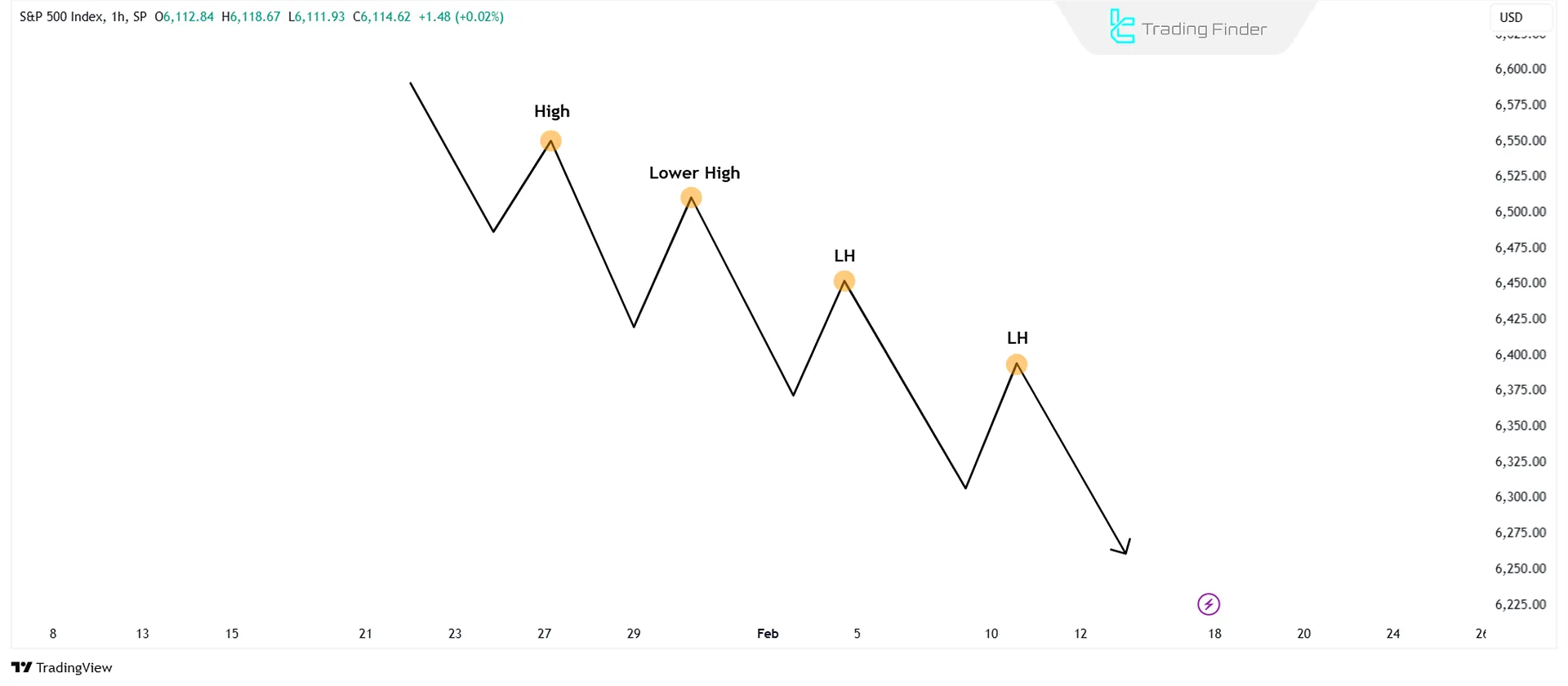
General formation of Lower Highs (LH) in a downtrend
These two concepts create a bearish structure, indicating weak buying pressure and seller dominance.
How to Identify Lower Lows in a Bearish Trend?
Although the price creates Lower Lows (LL) in a bearish trend, not every low is a valid structural low. To identify a valid Lower Low in a bearish trend, follow these steps:
- Identify Inducement (IDM): Start by locating liquidity zones, typically above recent swing highs.
- Formation of Swing Low: After a downward move and break of structure (BOS), the price typically retraces upward, forming a temporary Swing Low (lowest low in the downward move).
- Confirmation of Lower Low: As the price sweeps liquidity Inducement in pullback, the temporary Swing Low is confirmed as a valid Lower Low (Structural Swing Low).
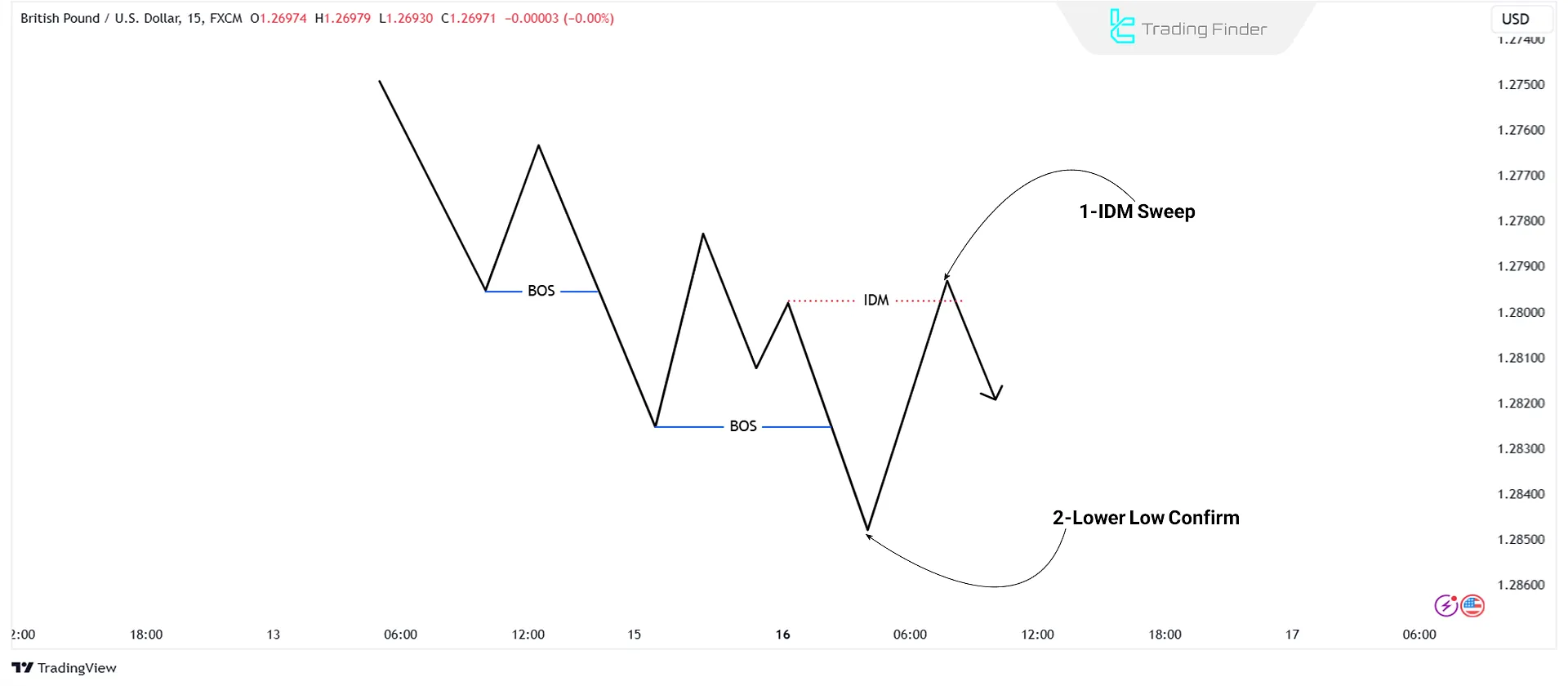
When the price breaks a valid structural Swing Low, this is called a valid Break of Structure (BOS).
With every downward Break of Structure, follow Inducement sweeps to locate the valid Lower Lows.
How to Identify Lower Highs in a Bearish Trend?
Prices create Lower Highs in a bearish trend, but not every high is a valid Lower High. To confirm a valid Lower High, follow these steps:
- Wait for a Price Pullback: After a downward move and break of structure (BOS), the price typically retraces upward, forming a temporary Lower High.
- Liquidity Zones: Examine liquidity collection above price highs.
- Confirmation of Lower High: If the price resumes its downward move after the pullback and breaks the previous valid structural low, the temporary high (highest high in pullback) is confirmed as a valid Lower High.
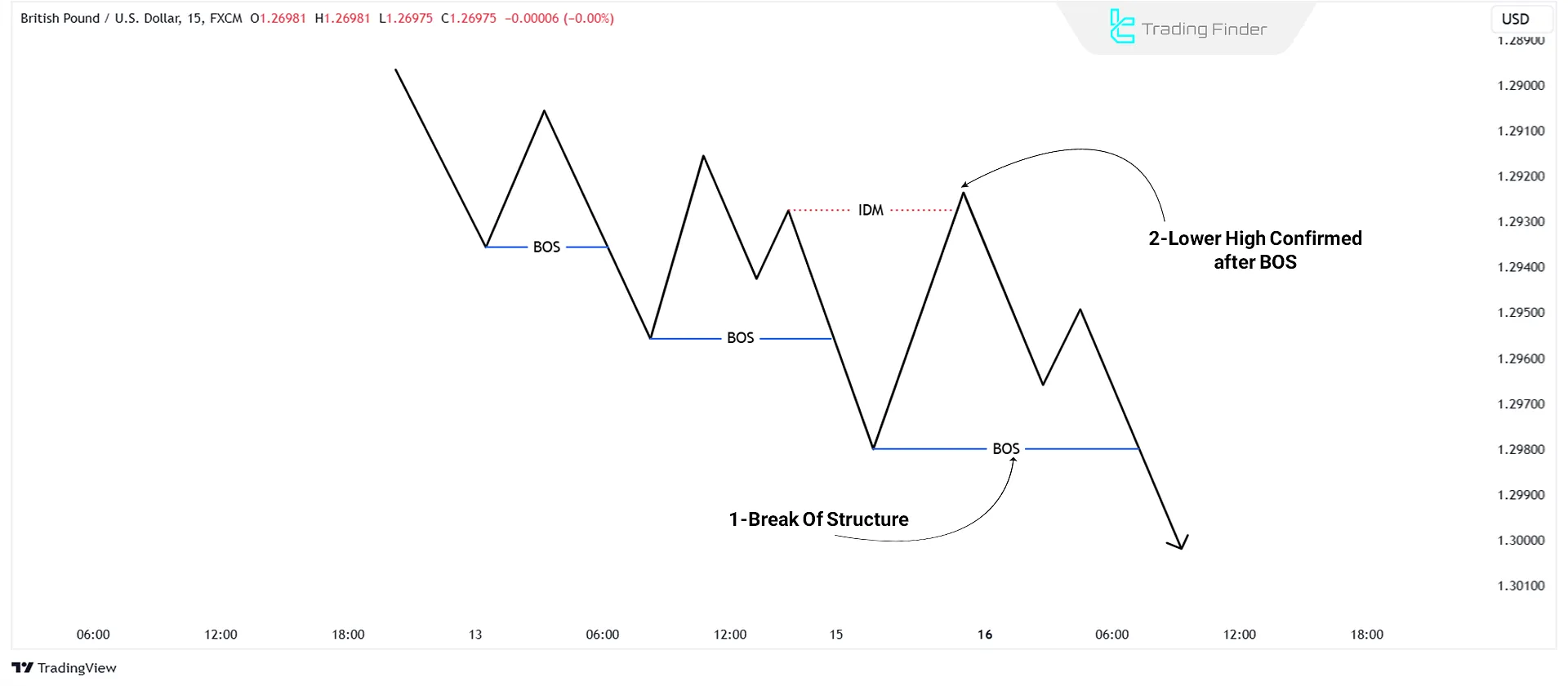
With every downward Break of Structure, watch for liquidity sweeps and the next structural break to confirm the Lower High.
Tip: Lower Highs are often the best points for entering sell trades, as the risk-to-reward ratio at these points is optimal.
How to Identify Structural Highs After a Bearish CHOCH?
To identify a structural high after a bearish Change of Character (CHOCH):
- Mark the last Higher High before the CHOCH.
- When the market transitions from bullish to bearish, the last Higher High of the bullish trend is marked as the structural high, as the bearish trend begins from there.
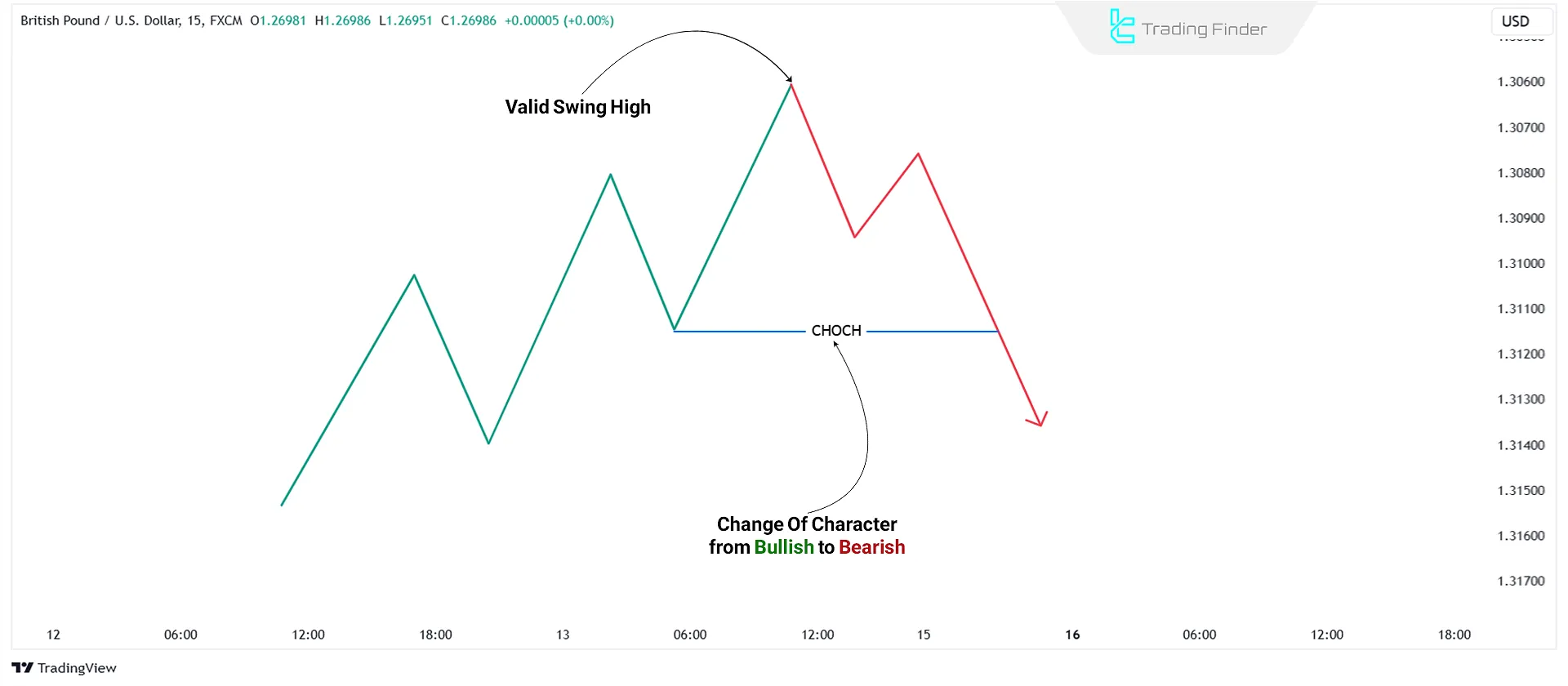
After every Break of Structure, follow Inducement sweeps and the downward BOS to confirm the Lower High.
How to Identify Structural Lows After a Bearish CHOCH?
CHOCH signifies a change of character; therefore, when the market transitions from bullish to bearish, mark the Lower Lows accordingly.
To identify a structural low after a bearish CHOCH:
- Identify Inducement (IDM) and wait for a swing low to form.
- After the swing low forms and liquidity is swept, the last swing low is marked as the valid structural low.
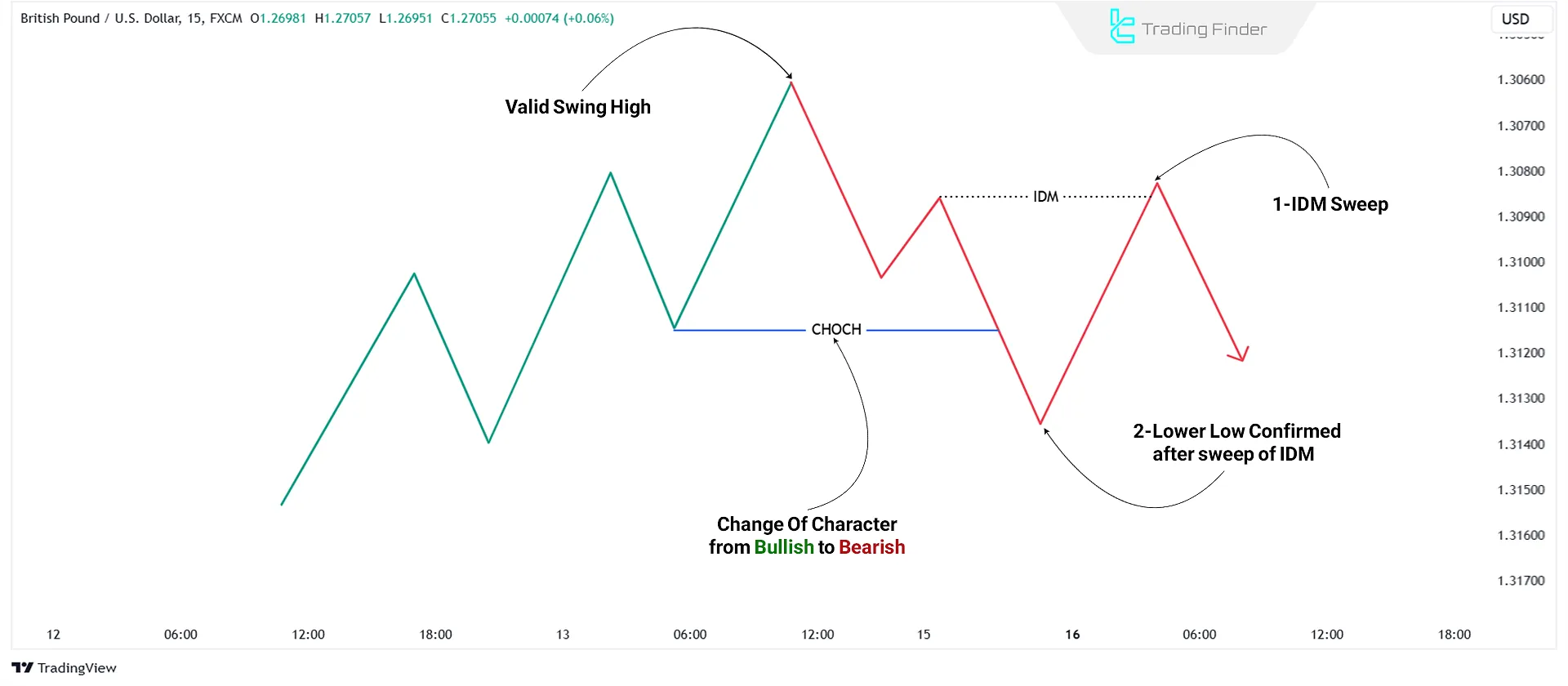
As the bearish trend continues, the price is likely to decline, breaking the previous low and creating a new low.
After every Break of Structure (BOS), look for Inducement sweeps to confirm the Lower Low.
Key Points for Using Lower Lows and Lower Highs
- Focus on Liquidity: Price sweeping liquidity is one of the most reliable signs to confirm bearish lows and highs.
- Risk Management: When entering sell trades near Lower Highs, place stop losses above these highs.
- Appropriate Time Frame: Use mid and long time frames for more accurate structure identification.
Conclusion
Lower Highs (LH) and Lower Lows (LL) indicate market weakness and the tendency to continue the bearish trend.
To identify valid Lower Highs and Lower Lows, focus on key concepts like Break of Structure (BOS), Change of Character (CHOCH), and Inducement (IDM).




